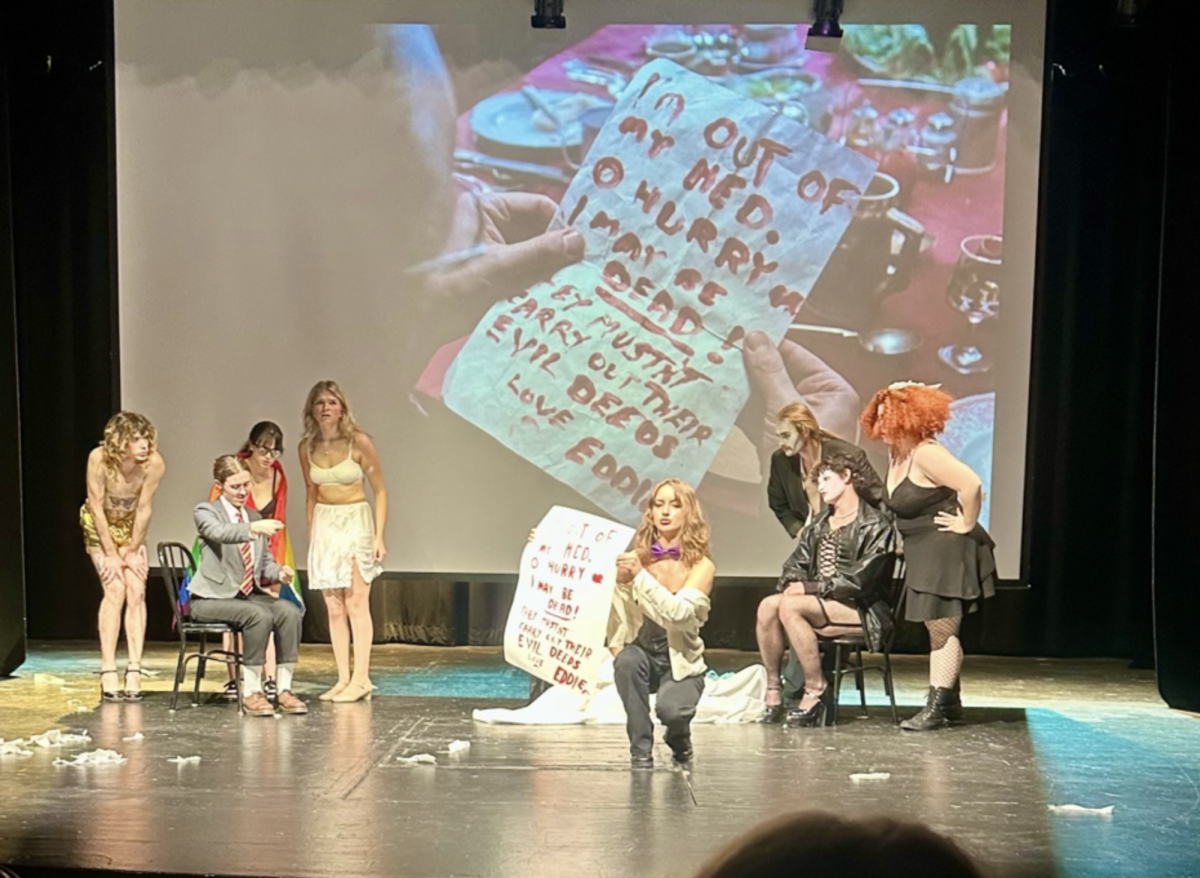On Oct. 26, Chatham University held a late-night shadow casting of the cult classic musical, “The Rocky Horror Picture Show.” The shadow casting committee, a student-run organization, took on the job of sponsoring the project. A shadow casting is a group of actors in front of the screening of a movie or play, acting out the words spoken while the film is playing.
Upon arrival, tickets were being sold, $3 for Chatham students and $5 for other viewers. All proceeds from the performance were donated to the Trevor Project, an organization dedicated to suicide prevention and crisis intervention for LGBTQ+ individuals.
After purchasing tickets, audience members were given a goodie bag with items for participation. Some of these props included newspapers, noise makers, condoms, rubber gloves and playing cards. For example, noise makers were used to celebrate during the wedding scene at the beginning of the show. The newspapers were used to put over your head during the song “Over at the Frankenstein Place”, mirroring Janet shielding herself from the rain during the movie. The props kept the audience engaged and involved during the show.
Once sat, audience members were asked to raise their hands if they were a first-time viewer of a shadow casting of “Rocky Horror.” Those who were new to the experience were then marked with a red “V” on their forehead by cast members using red lipstick, signaling that they were “Rocky Horror” virgins.
During the experience, you are welcome to follow along with the script while participating with props. This allows the audience to act alongside the performers with fun “callouts.” These callouts are infamous in other shadow casting productions as well as during viewings of the movie. Most of these are universal, but some showings make their own unique spin on them. For example, usually the audience yells “asshole” when Brad’s name is said and “slut” when Janet’s name is mentioned. However, the Chatham production decided to swap these phrases between the characters to add their own flare.
More interactive audience participation is in the iconic song and dance number, “Time Warp”. During this energetic song, the cast members align with the actors on screen to perform the exact choreography from the movie. Regular “Rocky Horror” goers stand up for this number and dance alongside the Transylvanians, knowing the notorious choreography.
Originally a musical, it was adapted into a film in 1975. It was initially not gaining traction, so theaters screeded it at their midnight showings. But it soon fostered a community when audiences began participating with the film at the Waverly Theater in New York City in 1976. Audience members would return to the cinemas frequently and talked back to the screen, beginning these callouts. Many began dressing as the characters and performing alongside the film. Thus, the origin of the first known shadow casting began.
In addition to its campy humor and comedic call outs, this show also serves a significant place to the LGBTQ community. These midnight showings created a safe haven for queer individuals looking for a place to express themselves freely and being able to relate to the characters on screen. The participatory culture allowed a sense of belonging within the LGBTQ community. The portrayal of characters such as Dr. Frank-N-Furter challenged traditional gender roles and sexual norms. His exploration of sexuality created a comfortable space to talk about and express spectrums of sexuality and gender.
The Rocky Horror Picture Show remains a beloved part of LGBTQ culture decades after its release, still fostering that sense of community today.


